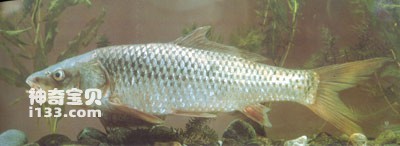Spring carp (Cyprinus (cyprinus) longipectoralis) belongs to the order Cypriniformes, Cyprinidae, Cyprin subfamily, and Cyprinus genus. Commonly known as: spring fish. English name: Long pectoral carp, Longfin carp.
Endangerment level: Vulnerable.
The body shape is like a carp. The head is narrow and longer than the body height. The tip of the muzzle is long. Mouth position, upper jaw slightly longer than lower jaw. There are usually 2 pairs of whiskers, but there are also 1 pair. The whiskers are short and often missing. The eyes are larger. Both the dorsal and anal fins have hard spines with fine teeth on the trailing edge; the starting points of the dorsal and pelvic fins are opposite or later than the dorsal fin, and the outer edge of the dorsal fin is significantly concave; the pectoral fin reaches or exceeds the starting point of the pelvic fin; the ventral and anal fins are both large. The crown of the second tooth in the main row of hypopharyngeal teeth has 3 grooves. The back of the body is bluish black and the belly is white. There are obvious black spots on the scales on the upper side of the body. The dorsal fin and even fins are light yellow and slightly red, and the caudal fin is light red.

Usually inhabits open water areas in lakes. It has a mixed diet, mainly feeding on benthic oligochaetes, but also insects, snails, small crustaceans, aquatic plants, etc. The smallest individual reaching sexual maturity is about 200 mm. The spawning period is from March to May, and is more concentrated in April. Because it spawns earlier, it is called spring fish. The eggs are laid on aquatic plants such as Myriophyllum algae and Echinacea.
Spring carp is a species endemic to my country and is only found in Erhai Lake, Yunnan.
It is larger in size and historically produced more. It is one of the main economic fish species in Erhai Lake. Since the late 1970s, falling water levels, excessive fishing, and improper introduction of new species have caused a sharp decline in the number of spring carps, and they are now rarely seen.
animal tags:
We created this article in conjunction with AI technology, then made sure it was fact-checked and edited by a Animals Top editor.